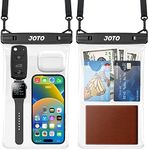Buying Guide for the Best Waterproof Pouches
Choosing the right waterproof pouch is all about understanding where and how you plan to use it. Whether you need it for swimming, kayaking, hiking in the rain, or just keeping your valuables safe at the beach, the right pouch will protect your items from water, sand, and dirt. Think about what you want to store inside, how often you'll use the pouch, and the environments you'll be in. A good waterproof pouch should be easy to use, reliable, and comfortable to carry.Waterproof Rating (IP Rating)The waterproof rating, often shown as an IP (Ingress Protection) code, tells you how well the pouch can keep out water and dust. The higher the numbers, the better the protection. For example, IPX7 means the pouch can be submerged in water for a short time, while IPX8 means it can handle longer or deeper submersion. If you just need splash protection, a lower rating is fine, but for swimming or water sports, look for higher ratings. Think about your activities: if you plan to fully submerge the pouch, go for IPX7 or IPX8; for rain or splashes, IPX4 or IPX5 may be enough.
Closure MechanismThe closure mechanism is how the pouch seals shut to keep water out. Common types include zip locks, roll-tops with Velcro, or snap closures. A good seal is crucial for keeping your items dry. Roll-top closures are great for heavy water exposure, while zip locks are quick and easy for light use. If you need to open and close the pouch often, consider how easy the closure is to use, especially with wet hands. Choose a closure that matches your need for convenience versus maximum protection.
Material QualityThe material of the pouch affects its durability, flexibility, and how well it keeps water out. Most waterproof pouches are made from PVC, TPU, or similar plastics. Thicker materials offer better protection and last longer, but may be less flexible. If you need to carry the pouch in a pocket or small bag, a thinner, more flexible material might be better. For rough outdoor use, choose a thicker, tougher material to prevent tears or punctures.
Size and CapacitySize and capacity refer to how much the pouch can hold. Some are just big enough for a phone and keys, while others can fit wallets, passports, or even small tablets. Think about what you need to protect and pick a size that fits those items comfortably. If you only need to carry a phone, a small pouch is more convenient. For travel or outdoor adventures, a larger pouch may be necessary to hold all your essentials.
Touchscreen CompatibilityTouchscreen compatibility means you can use your phone or device through the pouch without taking it out. This is important if you want to take photos, answer calls, or use apps while your device is protected. Some pouches have clear, sensitive windows for this purpose. If you plan to use your phone a lot while it's inside the pouch, make sure the pouch supports touchscreen use. If not, this feature may not be necessary.
Carrying OptionsCarrying options include straps, lanyards, or belt loops that make it easy to keep the pouch with you. A neck strap is handy for swimming or boating, while a belt loop or arm band might be better for hiking or running. Consider how you want to carry the pouch and choose one with the right attachment for your activities. Comfort and security are key—pick a carrying style that fits your lifestyle.
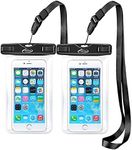


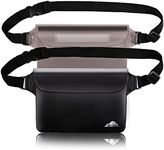
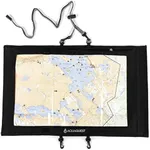
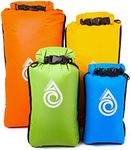



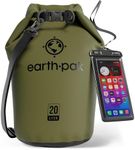
![[4 Pack] JOTO Universal Waterproof Case Phone Pouch Holder, IPX8 Underwater Cell Phone Dry Bag for iPhone 14 13 12 11 Plus Pro Max XS XR X 8 7, Galaxy S21 S20 S10 S9 Note Pixel Up to 7.0" -4Clear](https://images-proxy.bestreviews.guide/1KECXBrp-SGSaUOsAVzyACQK_zg=/0x150/https://m.media-amazon.com/images/I/51hdegHoM8L._AC_CX679_.jpg)


